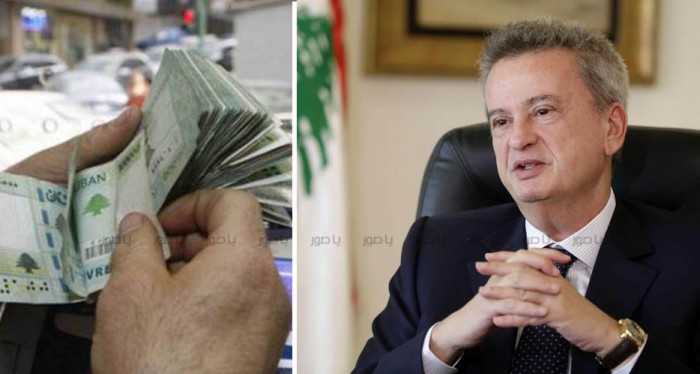Lebanon’s elites scramble to avoid the reckoning for its debt crisis
David Gardner/Financial Times/July 08/2020
ديفيد كاردنر: النخب اللبنانية تتدافع لتجنب أزمة الديون
The government and the banks cannot even agree on the scale of the problem, let alone tackle it.
In west Beirut last week, a desperate man shot himself dead. He was carrying a sign, quoting Ziad Rahbani, the Lebanese composer. “I am not an infidel”, it said. The song goes on: “Hunger is the infidel.” Another searing glimpse of despair, caught on CCTV and aired on TV, showed an armed man holding up a pharmacy — initially to steal infant formula rather than rob the till. One broadcaster prefaced newscasts with harrowing clips of food queues from Venezuela to Iran, asking viewers if this is the Lebanon they want. On its current course, that is where the country is heading.
The food queues in Lebanon are already appearing. The middle class, financially devastated before in the country’s 1975-90 civil war, is sinking once more.
Last year, the World Bank estimated 48 per cent of Lebanese live below the poverty line and that was before the full force of financial implosion and the economic wreckage of the coronavirus lockdown.
This year, talks between Lebanon and the IMF on emergency loans to rescue the country from a compounded debt, banking, fiscal and economic crisis have made no substantive progress after more than two months.
Unusually for a prostrate country forced to seek a bailout, there is no visible hostility towards the IMF. The Lebanese are reserving their anger for their corrupt political class — superannuated warlords and dynasts of the country’s 18 religious sects — and a bloated banking system that profited extravagantly from financing it.
Even though the government unanimously endorsed the 44th draft of its rescue plan at the end of April, it sent four delegations to the opening talks with the IMF. In lieu of serious negotiations, the fund found itself refereeing a tag-team wrestling match. There are now two main camps, which differ on how to add up the crippling debts that have bankrupted Lebanon. This is, of course, confusing.
The simplest explanation is that postwar Lebanon, propped up by funding from foreign grants and loans and inflows from the Lebanese diaspora to cover its huge current account deficits, lived far beyond its means. Its currency has been pegged unrealistically to the dollar since 1997. For 11 years, parliament did not pass a budget. For 15 years, the Banque du Liban (BdL), the oft-lauded central bank now at the core of this meltdown, did not publish its accounts. Almost 70 per cent of the assets of the banking system — which has deposits several times the size of the Lebanese economy — were lent to an insolvent state built on a sectarian spoils system.
In March, Beirut defaulted on its foreign debt for the first time. It is astonishing it was able to defy gravity for so long, except in terms of BdL policies. The central bank’s governor since 1993, Riad Salameh, kept attracting dollars from Lebanon’s diaspora and around the Middle East by offering ruinously high interest rates, latterly in double digits. He called this “financial engineering”. Many, including former ministers and central bankers, have called it a Ponzi scheme, given that he kept borrowing at ever higher rates from the same banks he was supposed to repay.
Depositors in Lebanese banks, where about three-quarters of deposits were in dollars, are being denied access to their savings, although billions were transferred abroad by the connected elites before the crisis took hold in October, bankers say. Market rates for the dollar early this week averaged 8,700 Lebanese pounds against an official rate of 1,507. This disparity is feeding galloping inflation; food prices have more than doubled since October.
The two camps, meanwhile, still cannot agree how to add up the country’s debts.
The government is in one camp. It was handpicked by the previous government toppled by mass protests in October. That was based on an alliance dominated by Hizbollah, the Iran-backed Shia politico-military movement.
This government says banks’ losses amount to a net $62bn (after their $21bn capital is wiped out) and BdL losses are close to $50bn. Taken together, this is more than twice the size of the economy.
But the banks, usually Sunni or Christian-owned and symbiotically tied to the political elite, say total losses are half this. Camille Abousleiman, who resigned from the previous government over failure to reform, says “It’s a bit like going to the doctor and being diagnosed with cancer and saying: ‘You know what, don’t call it cancer, let’s make it flu.’”
There is a genuine problem here over how fairly to share huge losses between the banks and BdL, the state and its public assets, and depositors who face a haircut. But the banks’ strategy is based on fantasy. Their liabilities were 80 per cent in dollars at the official exchange rate, but they prefer a more favourable rate.
They want to reduce their debt ratio through inflation that is devastating ordinary Lebanese. IMF estimates of bank losses are aligned with the government’s figures, officials say.
Lebanon’s elites have so often defied gravity in the past and remain insulated by their fabulous wealth. Perhaps that explains their otherwise inexplicable insouciance amid this deadly drama. It resembles a scrabble for deckchairs on the Titanic, enlivened only by occasional outbursts ordering the iceberg to get out of the way.






















